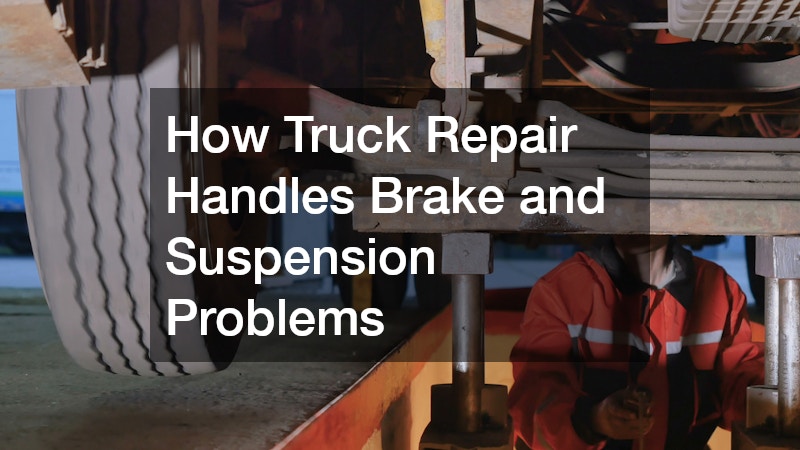
This article explores the essential aspects of truck repair related to brake and suspension systems, addressing common concerns and providing insights into effective solutions.
Truck drivers often need to remain alert for warning signs that indicate potential brake issues. Unusual noises such as grinding or squealing can be indicators of wear on brake pads or other components.
Video Source
Additionally, any vibrations felt in the brake pedal can point towards imbalances or worn-out parts.
Reduced responsiveness when pressing the brake pedal is another critical symptom to monitor. If the brakes don’t engage firmly or require more pressure to function, this could suggest hydraulic failure or air in the brake lines. Drivers should also be aware of any soft or spongy brake pedal feel, which can indicate serious underlying problems.
Furthermore, warning lights on the dashboard may illuminate to alert the driver of brake issues. Most modern trucks are equipped with electronic monitoring systems that can detect failures and signal necessary maintenance. Neglecting these signs can lead to catastrophic failures and serious accidents.
Diagnosing suspension problems in trucks involves a thorough inspection by qualified mechanics. The process typically begins with a visual inspection of the suspension components, including springs, shock absorbers, and control arms. Mechanics will look for signs of wear, tear, or damage that could impair the system's integrity.
Performance assessments are also crucial in identifying suspension issues. Mechanics may conduct tests, such as checking the truck's ride height and measuring the suspension's response to various surface conditions. This helps determine if components like shock absorbers are functioning correctly or need replacement.
Additionally, some shops utilize diagnostic tools to evaluate suspension performance. These tools can pinpoint problems that might not be visible to the naked eye, allowing for a more accurate diagnosis. By identifying issues early, truck owners can prevent costly repairs down the line.
When it comes to repairing truck brakes, the procedures generally follow specific guidelines to ensure safety and functionality. First, mechanics will assess the brake pads, rotors, and associated hardware for wear and damage. Replacement parts may be needed for failed components to restore proper braking efficiency.
Moreover, regular maintenance of brake fluid is vital for the overall health of the brake system. Mechanics will recommend servicing the brake fluid by bleeding it to remove any air bubbles and replacing contaminated fluid. This step helps maintain braking performance and prevents internal damage to the system.
In some cases, the entire brake system may need a thorough check-up, including calipers and lines. A complete system check helps ensure that all parts are functioning together effectively. By addressing potential vulnerabilities, truck owners can enhance safety and performance on the road.
Maintaining a truck's suspension system is critical for ensuring longevity and optimal performance. Regular inspections should be conducted to check for any anomalies, such as excessive wear on shocks or abnormal tire wear patterns. Early detection can help mitigate larger issues that could lead to dangerous driving conditions.
Additionally, proper adjustments and alignment are essential practices for maintaining suspension. Ensuring that components are correctly aligned can reduce wear on tires and other parts, prolonging their lifespan. Suspension adjustments help maintain the correct ride height and improve overall handling.
Finally, keeping up with routine maintenance schedules and addressing any warning signs promptly can significantly extend the life of the suspension system. This proactive approach not only enhances safety but also improves comfort and driving experience. Regular checks also minimize the risk of unexpected breakdowns, allowing for smoother and safer operation of the truck.
In summary, we have discussed vital aspects of truck repair focusing on brake and suspension systems. Understanding the symptoms of potential brake problems is paramount to ensuring safety on the road. It's equally important to recognize the diagnostic processes involved in identifying suspension issues to maintain vehicle functionality.
Moreover, familiarizing oneself with typical repair procedures for truck brakes can help owners better manage repairs and maintenance. Additionally, implementing best practices for maintaining suspension can lead to longer vehicle life and optimal performance. By prioritizing these critical systems, truck operators can avoid costly repairs and ensure a safer driving environment.
